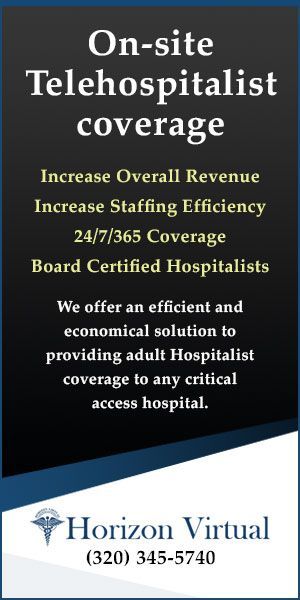tul Gawande, MD, MPH, in his ground-breaking book “Being Mortal: Medicine and What Matters in the End,” talks about how medicine so often “fails the people it is supposed to help,” especially with respect to the elderly and those with terminal illnesses. He goes on to say, “We’ve been wrong about what our job is in medicine. We think our job is to ensure health and survival. But really it is larger than that. It is to enable well-being. And well-being is about the reasons one wishes to be alive. Whenever serious sickness or injury strikes and your body or mind breaks down, the vital questions are the same: What is your understanding of the situation and its potential outcomes? What are your fears and what are your hopes? What are the trade-offs you are willing to make and not willing to make? And what is the course of action that best serves this understanding?”
cover story one
Serious Illness Communication
Building a statewide standard of care
By Lori Brostrom, MBA
In 2012, Gawande and others formed Ariadne Labs, which is a joint center for health systems innovation at Brigham and Women’s Hospital and the Harvard T.H. Chan School of Public Health. One of the center’s first initiatives was its Serious Illness Care Program (SICP) flagship study at Dana-Farber Cancer Institute to test a system intervention to support patient-clinician guided conversations about patient goals and values. Since then, the evidence basis for this program has grown, and its associated tools and resources now make up a widely used protocol globally.
A Minnesota Solution
In Minnesota, there was a growing recognition about the need to augment the existing infrastructure around advance care planning and fill the gaps that existed as patients neared end of life (EOL) after receiving diagnoses of one or more serious illnesses. Beginning in 2017, palliative care leaders from five of Minnesota’s health systems began discussions in partnership with the Minnesota Medical Association (MMA), the Minnesota Hospital Association (MHA) and Honoring Choices Minnesota to create a resource to support implementation of serious illness communication (SIC) as a statewide standard of care. This group formed an advisory committee to provide input on how to move forward in creating a Minnesota Advancing Serious Illness Communication hub.
The goals for the hub were to provide health systems with the tools, training and supports they need to succeed in filling the gaps that many patients experience following a serious illness diagnosis. Serious illness communication training and supports would equip clinicians and health systems to help patients articulate specific goals and preferences to inform their treatment plans in light of their specific diagnosis and likely prognosis.
Training in serious illness communication is rare.
Enhanced Training Techniques
Training will use evidence-based tools to provide clinicians and other team members with the skills to have meaningful and effective discussions with their patients. Because there are not enough palliative care specialists to meet the needs of patients near EOL, it is critical that all clinicians develop some level of expertise with conducting such conversations. Encouraging consistent and higher usage of SIC will help normalize the practice across all health care organizations to the benefit of patients, their families and clinicians.
Furthermore, a statewide hub also addresses the lack of training in this area in medical schools, as addressed in a September 2022 article in BMC Medical Education, which stated, “Required training in serious illness communication is rare in U.S. medical schools, with efforts at curricular reform stymied by competing institutional demands, lack of resources and accreditation requirements.” The article describes the results of a collaboration among four medical schools in Massachusetts that resulted in the identification of five core competencies that medical students should acquire and practice as residents. Absent more formalized training in medical schools, the CASIC training would be a useful starting point for medical students to begin acquiring these competencies.
What Are Serious Illness Conversations?
Serious illness conversations (SIC) are discussions between a physician and a patient that address a patient’s goals of care including their diagnosis and prognosis, values, fears, trade-offs they are willing to make as their illness progresses, and what is most important to them. Other members of the care team may often be included in the conversation, as well as in the preparation for it.
Unlike some advanced care planning (ACP) activities, SICs occur in the context of an illness. This is an important distinction, because oftentimes ACP occurs when patients are healthy or at earlier stages of illnesses, making it difficult to anticipate what one might want or need as diseases develop and progress. A 2017 article published in Health Affairs reviewed 150 studies showing that only 36.7% of US adults had completed an advance directive, a percentage that remained consistent across studies published between 2000 and 2016. Furthermore, fewer than 50% of the patients studied were 65 or older, indicating that many of these directives were done outside the context of an identified serious or terminal illness. This calls into question the likelihood that their wishes as reflected in the directives are indicative of what their goals and values are as they get closer to EOL. The resulting lack of concordance of care between the patient’s wishes and the care actually received at EOL can be significant, causing distress to patients, their families and members of their care teams. This adds impetus for clinicians to identify appropriate patients, conduct the conversations in a timely manner, and then document them in the EHR to ensure greater concordance with patients’ wishes.
Once a patient’s appropriateness for a SIC is determined, it is best to have the first conversation when patients are doing okay, and after their permission is given to have it. Their loved ones and other caregivers are often a part of the discussion.
For many patients, there is more than one conversation as a patient’s circumstances and needs change. Thus, SIC is not a single occurrence but rather a process that recognizes that previously made decisions may change and may increasingly involve a patient’s health care agent to ensure concordance of care as EOL approaches.
When is an SIC Appropriate?
Patients can experience one or more illnesses that would be considered serious yet may live good-quality lives for several years with proper care and treatment. Furthermore, they may have taken part in an ACP process to address questions around “What if something happens?” Ideally, this results in a health care directive and appointment of a health care agent. As their illnesses progress, however, the question then becomes “What if this happens?” Many health systems use the “surprise” question, would you be surprised if this patient dies within a year? If the answer is no, SIC would be appropriate. At that point most clinicians use determination indicators such as:
- Assessing that the patient’s life expectancy is less than one year
- The presence of multiple serious illness comorbidities.
- Observing a functional decline in the patient.
- A health system’s unique EHR algorithm using multiple criteria.
Serious Illness Conversations Are Important
SIC have multiple benefits for patients and their families, as well as for the clinicians who are caring for them. At its core, SIC is a critical continuation of the ACP process helping to ensure that patients care plans reflects their goals, values and wishes as they near EOL.
The benefits for the patient are several; research shows that those who have EOL conversations with their physicians and family members:
- Are more likely to be satisfied with their care and feel less anxious as they approach EOL.
- Require fewer aggressive interventions at EOL.
- Place less strain on their families and caregivers.
- Are more likely to take advantage of hospice resources—and do so earlier—or die at home, while experiencing fewer hospital readmissions and decreased ER and ICU usage.
Similarly, proven benefits of SIC to physicians and other members of the care teams include:
- Reduced moral distress and provider burnout.
- Reduced conflict between providers and patients and/or their families.
- Avoidance of unnecessary treatment and promotion of greater concordance of care.
- Increasing awareness about various options for care, available resources and support at earlier stages—and before a crisis.
- Greater shared understanding among the care team.
Finally, for health care organizations, benefits of SIC and their consistent documentation include:
- Greater evidence of positive outcomes with SIC and ACP, including improved quality and safety metrics.
- Increased use of ACP billing.
- Potentially broader availability of documentation of patient EOL wishes in EHRs across health systems.
SIC is not a single occurrence but rather a process.
When implementing SIC it is important to involve all members of the care team, including not just physicians, but PAs, APRNs, RNs, social workers and chaplains. Some underserved communities have also had success in using community health workers to perform patient preparation for SIC and participate in elements of the conversation and surrounding implementation processes.
Training and use of SIC is encouraged across multiple care settings and medical specialties, wherever seriously ill patients receive their care. In many cases, patients remain exclusively with their primary care providers throughout their illnesses, or their PCPs work in tandem with specialty providers such as oncology or cardiology. In those cases, having the conversations and documenting them is critical to ensure that the patient receives care that is both coordinated and concordant with their wishes, regardless of who is providing it.
Similarly, patients who receive care across multiple settings, for example, hospital, skilled nursing facility and/or residential or in-home hospice, especially benefit from having their wishes and goals articulated early and with multiple providers. Ensuring that all caregivers and family members are informed and aware of patient wishes, as well as the existence of signed POLST forms, health care agents and directives, are critical elements of the implementation process.
The prognostication element of the conversations has evolved as more types of providers become involved. In earlier years, conveying prognosis was the exclusive purview of physicians, and even then, was occasionally a challenge. SIC training enables increased interprofessional involvement, and provides frameworks such as time ranges, impacts on function and, while acknowledging uncertainty, expressing concern that time may be short. In addition, using tools such as eprognosis.org to assist providers is also encouraged.
Best Practices for Effective Conversations
The SICG provides an evidence-based framework for having effective conversations across multiple settings and diverse patient populations. It offers techniques that can maximize the effectiveness and impact of the conversations, including asking the patient’s permission, scheduling a specific appointment for the conversation, and providing materials in advance to prepare the patient for the conversation. Ariadne Labs, in collaboration with the Conversation Project, developed the What Matters to Me Workbook to help people with a serious illness get ready to talk to their health care team about what is most important to them. Providers may be able to use CMS’ ACP billing codes for reimbursement for these conversations.
Including family members and/or caregivers in the conversation helps ensure that patients’wishes are known and acknowledged by those involved in their care and who may, at some point, be making decisions on their behalf.
Having the conversation earlier in the patient’s disease trajectory is important. By having the conversation when the patient is feeling okay versus nearer EOL or is hospitalized or having an acute health episode, the patient and care team can better focus on issues relevant to the patient and take a more collaborative approach.
Including multiple members of the care team can further ensure that the patient’s wishes are heard and that agreed-upon steps are documented and acted upon.
CASIC Training
The core training begins with a three-module, on-demand introductory series that begins the process of preparing clinicians and healthcare organizations to engage every patient experiencing a serious illness in meaningful discussions about their diagnoses, prognosis and care choices.
The modules include:
Part 1: Serious Illness Communication—An Introduction (15 minutes);
Part 2: The Serious Illness Conversation Guide (30 minutes), which includes a demonstration of an actual conversation, as well as how to use the SICP and best practices;
Part 3: Implementing Serious Illness Communication (15 minutes), which discusses the steps clinicians can take to make SIC a part of their practice.
The SICG has evolved over the years based upon patient testing and has also been adapted for different care settings and patient populations, for example, acute care versus clinical settings, or patients with dementia or specific illnesses such as cancer. It also reflects and acknowledges different cultural needs for patients. Its use has been shown to foster greater consistency in conversations across different patient populations, and helps ensure that all important topics are covered. Research has shown that the average amount of time it takes to have a thorough conversation with a patient is 14 to 17 minutes.
The free CASIC training is available to all members of care teams who work with patients with serious illnesses. The modules are taken in sequence, as each subsequent module builds on the knowledge gained in previous modules. They can be accessed at https://www.advancingsic.org/training-and-events
These modules are CME-eligible for physicians. Other health professionals who participate in this CME activity may submit their Statement of Attendance to their appropriate accrediting organizations or state boards for consideration of credit. The modules will be a prerequisite for more extensive virtual classroom training launching in early 2024, which will focus on learning how to conduct these conversations effectively and with confidence using role-playing techniques, as well as how to incorporate them into day-to-day workflows.
Looking into the future, CASIC hopes to launch additional training that focuses on cultural, equity and other population-specific issues—for example, pediatric or dementia patients—as they impact the effective use of SIC. Additional modules, including best practices related to implementation such as reimbursement and billing issues, or use of and documentation in EHR systems such as Epic’s ACP Navigator module, are also being explored, as well as advanced coaching and role-playing around effective conversations.
Patients deserve compassionate and reliable support from their clinical team in understanding their prognoses and in prospectively defining the care that they do and do not want to receive. This program seeks to make those conversations the rule, rather than the exception, becoming the standard of care in Minnesota as envisioned by CASIC’s pioneering advisory committee.
Lori Brostrom, MBA, is the executive director at the Center for Advancing Serious Illness Communication, a joint initiative of the Minnesota Medical Association and Minnesota Hospital Association. Advancingsic.org.
MORE STORIES IN THIS ISSUE
cover story one
Serious Illness Communication: Building a statewide standard of care
By Lori Brostrom, MBA
cover story two
Radon and Lung Cancer in Minnesota: A bigger problem than you think






















